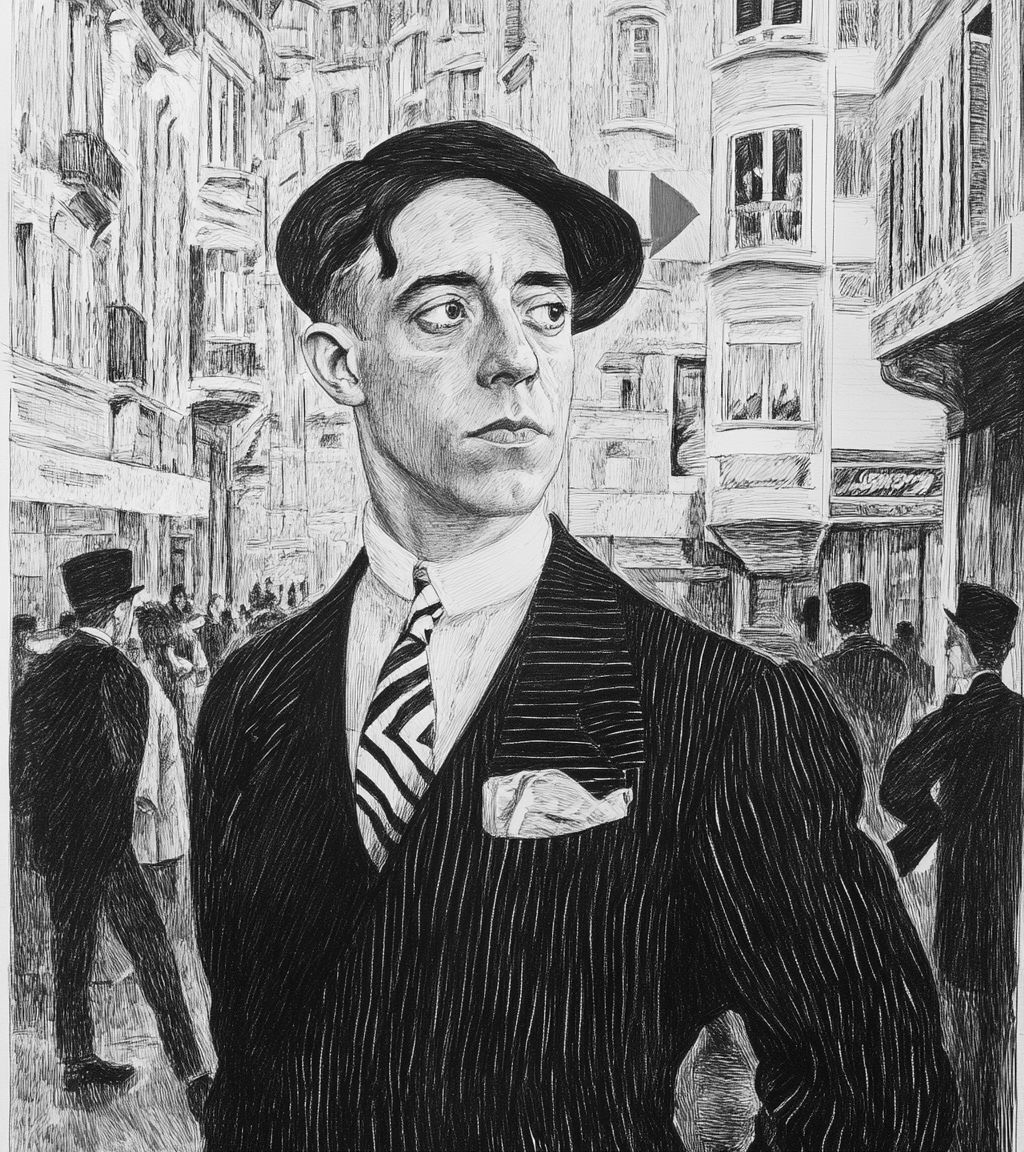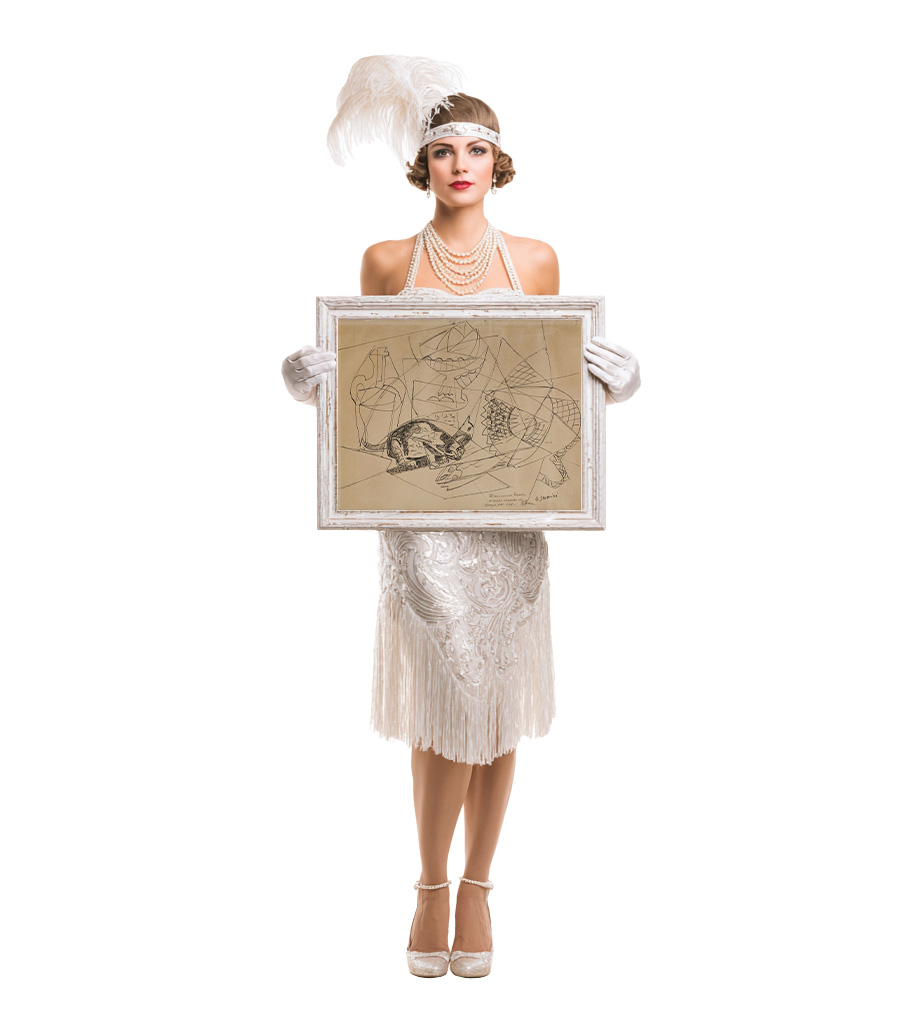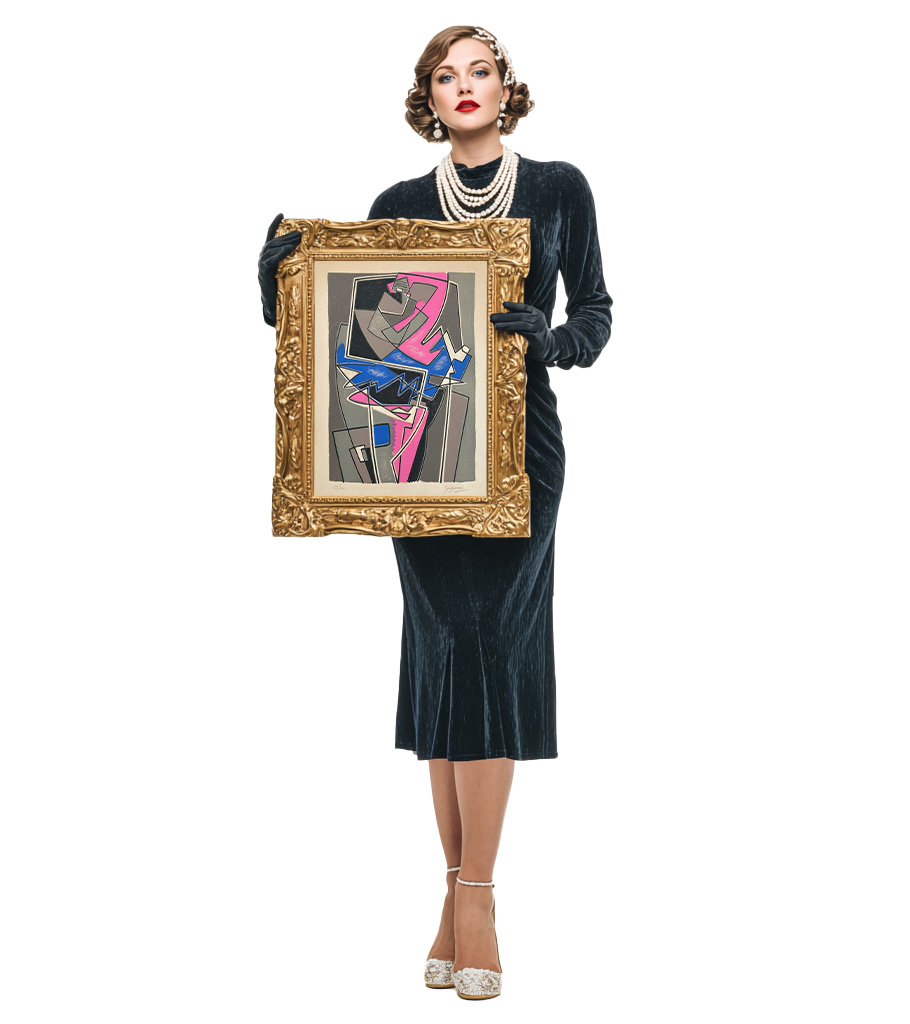
Gino Severini
After early art training in Rome, Gino Severini moved to Paris in 1906, where he became closely associated with the city’s avant-garde scene, meeting artists and thinkers such as Pablo Picasso, Guillaume Apollinaire, and Georges Braque. In 1910, Severini became one of the founding members of the Futurist movement, co-signing the “Futurist Painting Manifesto”. He played a vital role in promoting Futurism internationally, organizing exhibitions in Paris, London, and Berlin.
Severini’s artistic development included several key phases. Early in his career, he adopted divisionism, a technique involving small dots of color, before embracing the speed, energy, and fragmentation of futurism. His paintings from this period often depicted movement and nightlife, such as Dynamic Hieroglyph of the Bal Tabarin (1912). Later, Severini’s work transitioned toward cubism and eventually neoclassicism, reflecting a broader return to order in European art. In his later years, he also worked on mosaics, frescoes, and religious commissions, especially in France and Switzerland.
Some of Severini’s most well-known paintings include The Boulevard (1910–1911), Dynamic Hieroglyph of the Bal Tabarin (1912), Pan Pan Dance, Italian Lancers at a Gallop (1915), and Blue Ballerina. His works have been exhibited extensively, with notable retrospectives held at the Estorick Collection and Grosvenor Gallery in London. During his lifetime, he showed at influential venues such as Der Sturm (Berlin), the Rome Quadrennial, and the Marlborough Gallery. Severini’s art is now held in major museum collections, including MoMA (New York), the Guggenheim, Musée National d’Art Moderne (Paris), and MART (Trento and Rovereto).
Collected by major institutions and notable private collectors:
— National Gallery of Art, Washington, D.C.— Centre Pompidou
— Tate
— Peggy Guggenheim Venice
Notable sales and auction records:
— Danseuse, £15 million at Sotheby's, 2008— Ritmo astratto di madame M.S. (Abstract rhythm of Madame M.S.), £7 million at Sotheby's, London, 2015
— Etude pour Autoportrait au canotier, USD 4,7 million at Christie's, New York, 2014
Artworks and Paintings
Biography and Artistic Career Highlights
Gino Severini was born on April 7, 1883, in Cortona, Italy, into a modest civil servant’s family. His childhood was spent in the Tuscan countryside, where he showed an early interest in drawing. In his youth, he moved to Florence, where he began studying painting and was introduced to the principles of pointillism. Even at this stage, he was fascinated by experiments with color and form.
1899–1901 — worked in art studios in Florence, establishing his first contacts with the local bohemian circles.
1901 — moved to Rome, where he attended evening art classes and met Umberto Boccioni. Their friendship later determined Severini’s involvement in the Futurist movement.
1906 — moved to Paris, where he immersed himself in the avant-garde scene of Montmartre. Here he met Picasso, Braque, Apollinaire, and interacted with pointillist and Cubist painters. Paris became his main creative arena.
1910 — joined the Futurist movement and signed the «Manifesto of Futurist Painting». Began creating dynamic compositions dedicated to speed, machines, and the rhythm of modern urban life.
1912 — took part in the famous Futurist exhibition in Paris, where he presented works such as «Panorama of Light» and «Dance of the Pan-Pan», which brought him international recognition.
1913–1916 — created major Futurist works including «Train in Motion» and «The Dynamics of Dance». In these works, he combined Cubist fragmentation with Futurist dynamism.
1920s — developed a Neo-Classical style, turning to mosaics, frescoes, and monumental art. Severini became a mediator between the avant-garde and tradition.
1923 — published the theoretical treatise «Du Cubisme au Classicisme», in which he justified a return to harmony and order.
1930s — worked on monumental frescoes in Switzerland and Italy and took part in Europe’s cultural life.
1935 — appointed professor at the Academy of Fine Arts in Rome, where he taught a new generation of artists.
1940s–1950s — continued experimenting with mosaics and stained glass, creating works for churches and public buildings.
1956 — published his autobiography «La vita di un pittore», summing up his artistic career.
On February 26, 1966, Gino Severini died in Paris. His legacy unites two poles: Futurism, with its cult of speed and energy, and Neo-Classicism, which affirmed harmony and tradition. Severini became a vital link between the radical avant-garde and the timeless values of art.


